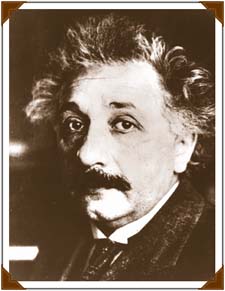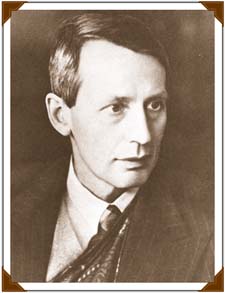
Albert Einstein.
Visit our Einstein exhibit
|
 any unanswered questions remain, but in the century since the discovery that atoms contain electrons, physicists have been centrally concerned with studying the structure of matter. They have won remarkable results. The electron was only the first of a long list of fundamental particles -- photons, muons, quarks and more. any unanswered questions remain, but in the century since the discovery that atoms contain electrons, physicists have been centrally concerned with studying the structure of matter. They have won remarkable results. The electron was only the first of a long list of fundamental particles -- photons, muons, quarks and more.
"The general public may be able to follow the details of scientific research to only a modest degree, but it can register at least one great and important gain: confidence that human thought is dependable and natural law is universal." --Albert Einstein
|

George Paget Thomson (1892-1975)
|
 he electron itself has turned out to be not quite the creature that J.J. Thomson thought it was. According to the quantum theory developed by Albert Einstein and others, it is a mistake to think that electrons must be either particles or waves but not both. Under some conditions electrons act like particles; under other conditions they act like waves. (The wave character of electrons was in fact experimentally indicated by J.J. Thomson's own son, G.P. Thomson, who as a result shared the Nobel Prize in 1937.) Physicists have also found that electrons are only the most common members of a whole "family" of related fundamental particles -- all of them infinitesimal points carrying charge, mass, and something called "spin." Why the particles have these properties remains a mystery, a grand challenge for the next century of research. he electron itself has turned out to be not quite the creature that J.J. Thomson thought it was. According to the quantum theory developed by Albert Einstein and others, it is a mistake to think that electrons must be either particles or waves but not both. Under some conditions electrons act like particles; under other conditions they act like waves. (The wave character of electrons was in fact experimentally indicated by J.J. Thomson's own son, G.P. Thomson, who as a result shared the Nobel Prize in 1937.) Physicists have also found that electrons are only the most common members of a whole "family" of related fundamental particles -- all of them infinitesimal points carrying charge, mass, and something called "spin." Why the particles have these properties remains a mystery, a grand challenge for the next century of research.
|

Early television tube.
| The technologies built on
the discovery of the electron also rely on more recent basic research,
mostly paid for by taxpayers. You can EXIT to our Transistorized!
exhibit, or to mini-exhibits on computers
and medical
imaging. |
|
|
 he knowledge we have gained has made key modern technologies possible. If you are reading this on a computer monitor you are probably looking at a direct descendent of the cathode ray tube that Thomson used in his 1897 experiments. If it's a flat-screen monitor, this and other solid-state devices also descend almost as directly from the discoveries of Thomson and his colleagues. Indeed most of our civilization's computation, communications, entertainment and much else rely on technical calculations that would have been impossible without knowledge of the electron and its properties. he knowledge we have gained has made key modern technologies possible. If you are reading this on a computer monitor you are probably looking at a direct descendent of the cathode ray tube that Thomson used in his 1897 experiments. If it's a flat-screen monitor, this and other solid-state devices also descend almost as directly from the discoveries of Thomson and his colleagues. Indeed most of our civilization's computation, communications, entertainment and much else rely on technical calculations that would have been impossible without knowledge of the electron and its properties.
|
|
|
Table of Contents:
Exhibit Home
J.J. Thomson
Mysterious Rays
1897 Experiments
Corpuscles to Electrons
Legacy for Today 
More Info
|
 J.J. Thomson J.J. Thomson
Click here for information about this exhibit
and
suggested readings and links.
|




